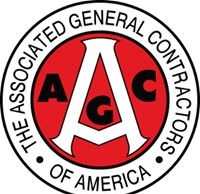WASHINGTON, D.C. – February 27, 2015 – (RealEstateRama) — The rule of thumb should be this: If a financial product, such as a reverse mortgage, takes more than 350 words to explain, then there should be legal checkpoints before someone is allowed to sign off on one.
Of course, this is a facetious concept. But it does bring up the obvious: If you don’t fully understand a financial product, it would be best to seek the advise of someone you trust before you allow yourself to get into trouble.
This goes double for products that tend to come with promises that sound to good to be true or attract unsavory wheelers and dealers.
But, let’s look at how reverse mortgages work, starting with the basics:
When you borrow money to buy a home, you have a loan called a mortgage. As the payment periods for these last 15, 20, or even 30 years, banks set up a system in which the first payments cover mostly the interest on the loan, while only covering a small amount of the sum borrowed, which is called the principal.
They do this for a simple reason. If the principle were paid off first, and the payments suddenly stopped, the loan would have been free. So, they have borrowers pay interest first, which represents the bank’s profits. Profits are paid off first.
Over time, the ratio of principal and interest in a payment slides in the other direction with payments late in the loan mostly paying off principal, while the interest is, by then, mostly accounted for.
As principal payments begin to add up, the borrower is accruing equity in the home. When the principle of a loan is paid down to zero, the owner owns 100 percent of the equity, which would be the current market value of the house.
While the loan is still active, that equity is, by all rights and purposes, money in the bank. Homeowners can borrow against it, by taking out a second mortgage or a so-called reverse mortgage, which is not available until the youngest borrower signed on the loan turns 62 years of age.
A new mortgage would involve refinancing the remaining value of the home, the remaining equity that is owned by the bank. That involves re-negotiating the terms of the original loan.
A second mortgage means using the equity as collateral to finance items like home repairs, a vacation, a summer home or college tuition. The original loan is not re-negotiated for a second mortgage.
A reverse mortgage also involves the equity. It is a cash loan based on the equity that comes in the form of payments to the homeowner.
There is no payback required until the homeowner either sells the home or dies, in which case he loan payments revert to the homeowner’s heirs.
You can already see where too good to be true comes into play. This is a loan that sounds like it does not include paying the bank, but involves the bank paying you on a monthly basis. That’s a pretty exciting idea and one that should at least raise a yellow flag, if not a red one. Proceed with caution from this point on.
In theory, while the numbers may shift due to market forces, a reverse mortgage only goes as far as the equity allows. The bank, functionally, is reversing the equity on paper, so that, as a reverse loan continues, the borrower is accepting more and more payments out of their equity. A reverse mortgage can only go as far as the equity allows. Banks don’t make payments to lenders when their equity in the home has returned to zero, in the event that this happens.
This only covers the basics of a reverse loan. There are two types, according to the Consumer Financial Protection Bureau, that can be insured by the Federal Housing Administration (FHA) by their Home Equity Conversion Mortgage program, known as HECM.
You can apply for insurance on a payment of loan proceeds reverse mortgage, which can be payed as a line of credit, through monthly installments or b a lump sum.
Secondly, you can in sure an interest rate reverse loan, which includes fixed or adjustable interest rates, although fixed interest rates are currently only available with a lump sum loan option.
The Federal Trade Commission divides reverse mortgages into three types, the single-purpose type, the federally-insured type and the proprietary-insured type.
Single-purpose reverse mortgages are offered by some state and local government agencies and nonprofit organizations, while federally-funded reverse loans the the ones described above, HECM loans backed by the U.S. Department of Housing and Urban Development’s FHA program.
The proprietary reverse mortgages are private loans backed by the lender.
Consumers should know that reverse mortgages come with various bank fees and insurance costs. Lenders don’t like to lose these gambles, so loans are insured. Lenders also charge origination fees, switching fees and other servicing fees.
These are loans the grow, not shrink, over time. Your equity in your home shrinks as the reverse loans continue. Even if you don’t set the up as a line of credit type account, these are what all of the reverse loans essentially are – a line of credit that goes as you spend, a line of credit that grows in increments through monthly payments or a line of credit established all at once in a lump sum.
Homeowner’s still own the homes, so they still pay property taxes, require insurance for accidents and liability. In addition, homeowner’s now may be contractually obligated to keep up the value of the home through appropriate maintenance, such as cutting the lawn and painting the home.














